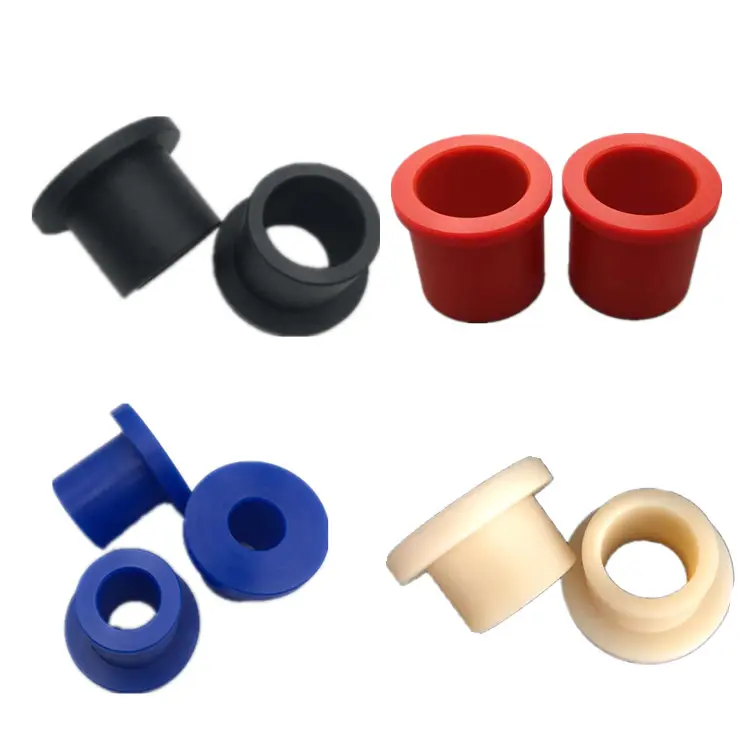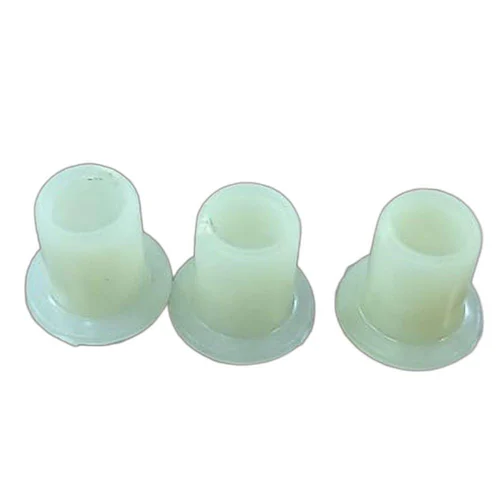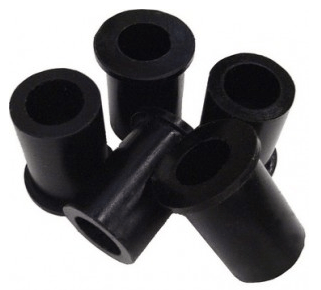
Can I find information on alternatives to plastic bushings for specific industrial applications?
If you are looking for information on alternatives to plastic bushings for specific industrial applications, there are several ways to find relevant information. Here’s a detailed explanation:
1. Research Online:
– Conduct a search on industrial websites, forums, and technical resources that focus on machinery, equipment, and industrial applications. Look for articles, whitepapers, or case studies that discuss alternative bushing materials or technologies.
– Explore manufacturer websites and product catalogs. Many manufacturers provide detailed information about their bushing products, including alternative materials they offer for specific applications.
– Check industry-specific publications or journals that cover topics related to machinery, equipment, or specific industrial sectors. These publications often feature articles or research papers discussing alternative bushing options and their suitability for various applications.
2. Consult with Industry Experts:
– Seek advice from industry professionals, engineers, or consultants who specialize in the specific industrial application you are interested in. They can provide insights based on their expertise and experience with alternative bushing materials.
– Attend industry conferences, trade shows, or seminars where you can network with experts and professionals in your field. Engage in discussions and ask questions about alternative bushing solutions for your specific application.
3. Contact Bushing Manufacturers:
– Reach out to manufacturers or suppliers of bushing products and inquire about alternative materials they offer. Many manufacturers have technical support teams who can provide guidance and recommendations based on your specific requirements.
– Share details about your application, such as operating conditions, load requirements, temperature range, and any specific performance criteria. This information will help manufacturers suggest suitable alternatives to plastic bushings.
4. Consider Other Bearing Types:
– In some cases, alternative bearing types may be suitable replacements for plastic bushings. Explore options like roller bearings, needle bearings, or sleeve bearings, depending on the specific application requirements.
– Each bearing type has its own advantages and limitations, so it’s important to consider factors such as load capacity, speed, lubrication requirements, and environmental conditions when evaluating alternative bearing options.
5. Evaluate Application-Specific Requirements:
– Consider the specific requirements of your industrial application when exploring alternatives to plastic bushings. Factors such as temperature range, chemical compatibility, load capacity, noise reduction, or self-lubrication can influence the suitability of different materials or bearing solutions.
– Take into account the overall performance, durability, and maintenance requirements of the alternative bushing options. Assess how they align with your application’s needs and any potential trade-offs involved.
By conducting online research, consulting with industry experts, contacting manufacturers, considering alternative bearing types, and evaluating application-specific requirements, you can gather valuable information on alternatives to plastic bushings for specific industrial applications. This will help you make informed decisions and select the most suitable bushing solutions for your specific needs.

What are the common sizes and dimensions of plastic bushings, and how do I choose the right one for my application?
When selecting plastic bushings, it’s important to consider the appropriate sizes and dimensions to ensure compatibility with your application. Common sizes and dimensions of plastic bushings can vary depending on the specific industry and application requirements. Here’s some information to help you understand the common sizing aspects and guide you in choosing the right plastic bushing for your application:
- Inner Diameter (ID): The inner diameter refers to the measurement of the opening of the bushing, which corresponds to the shaft or pin it will be mounted on. It is crucial to select a plastic bushing with an inner diameter that matches the diameter of the shaft or pin in your application. Measuring the shaft or pin accurately will help you determine the appropriate inner diameter of the bushing.
- Outer Diameter (OD): The outer diameter refers to the measurement of the outside surface of the bushing. It corresponds to the bore or housing in which the bushing will be inserted. Ensure that the outer diameter of the plastic bushing matches the dimensions of the bore or housing to achieve a proper fit and alignment.
- Length: The length of the plastic bushing is the distance between the two ends of the bushing. It determines the amount of space occupied by the bushing within the application. Consider the available space and clearance in your application to select a plastic bushing with an appropriate length that fits without interference.
- Flange or Collar: Some plastic bushings may have a flange or collar at one end, which provides additional support or acts as a stopper. The presence of a flange or collar can affect the overall dimensions and installation requirements of the bushing. Determine if your application requires a bushing with a flange or collar, and consider the additional dimensions it adds to the overall size.
- Wall Thickness: The wall thickness of the plastic bushing refers to the thickness of the material between the inner and outer surfaces of the bushing. It plays a role in determining the strength and load-bearing capacity of the bushing. Consider the expected loads and forces in your application to select a bushing with an adequate wall thickness to handle the required load requirements.
In order to choose the right plastic bushing for your application, it is recommended to follow these steps:
- Identify the specific dimensions and requirements of your application, such as the required inner diameter, outer diameter, length, and any additional considerations like flanges or collars.
- Refer to the manufacturer’s documentation, catalogs, or product datasheets to identify plastic bushings that match your required dimensions and meet the performance criteria for your application.
- Consider the load capacity, speed limitations, temperature range, and other relevant factors specified by the manufacturer to ensure the selected bushing meets the performance requirements of your application.
- If necessary, consult with application engineers or technical experts who can provide guidance based on their experience and knowledge of plastic bushings.
- Procure a sample or a small quantity of the selected plastic bushing to test its fit, function, and performance in your specific application before proceeding with larger-scale implementation.
By considering the common sizes and dimensions of plastic bushings and following the selection process outlined above, you can choose the right plastic bushing that fits your application’s requirements, ensuring proper functionality and performance.

Are there video tutorials on the proper installation and maintenance of plastic bushings in various machinery?
Yes, there are video tutorials available that provide guidance on the proper installation and maintenance of plastic bushings in various machinery. These video tutorials can be valuable resources for understanding the correct procedures and best practices to ensure optimal performance and longevity of the bushings. Here are some ways to access video tutorials on the installation and maintenance of plastic bushings:
- Manufacturer Websites: Many manufacturers of plastic bushings provide video tutorials on their official websites. These videos are often created by the manufacturers themselves and offer detailed instructions specific to their products. Visit the websites of reputable plastic bushing manufacturers and look for their resources section or video library to find relevant installation and maintenance tutorials.
- Online Video Platforms: Video-sharing platforms such as YouTube, Vimeo, and Dailymotion host a vast amount of instructional content, including tutorials on the installation and maintenance of various components, including plastic bushings. You can use the search function on these platforms and enter relevant keywords such as “plastic bushing installation” or “plastic bushing maintenance” to find videos created by experts or enthusiasts in the field.
- Industrial Associations and Organizations: Industry-specific associations and organizations often provide educational resources for professionals in the field. Visit the websites of these associations or organizations related to the machinery or industrial sector you are interested in and look for any available video tutorials or instructional materials on plastic bushing installation and maintenance.
- Online Forums and Communities: Participating in online forums and communities dedicated to machinery, engineering, or related topics can be a valuable source of information. Members of these communities often share their experiences, tips, and video tutorials on various aspects of machinery maintenance, including the installation and maintenance of plastic bushings. Engage in discussions, ask questions, and seek recommendations for video tutorials from experienced members.
- Training Courses and Webinars: Some organizations offer online training courses or webinars on machinery maintenance and component installation, which may include specific modules on plastic bushings. These courses often provide comprehensive guidance and may include video demonstrations or tutorials as part of the learning materials. Look for training providers or educational platforms that offer courses related to machinery maintenance and inquire if they cover topics related to plastic bushing installation and maintenance.
When accessing video tutorials on the installation and maintenance of plastic bushings, it’s essential to prioritize reliable and reputable sources. Check the credentials of the video creators, read user reviews or comments, and ensure that the information provided aligns with industry best practices. Additionally, always refer to the manufacturer’s guidelines and recommendations specific to the plastic bushings you are working with, as different products may have unique installation and maintenance requirements.
By utilizing video tutorials and instructional materials, you can gain valuable insights into the proper installation and maintenance procedures for plastic bushings in various machinery, helping you ensure the correct handling and care of these components.


editor by CX 2024-04-13